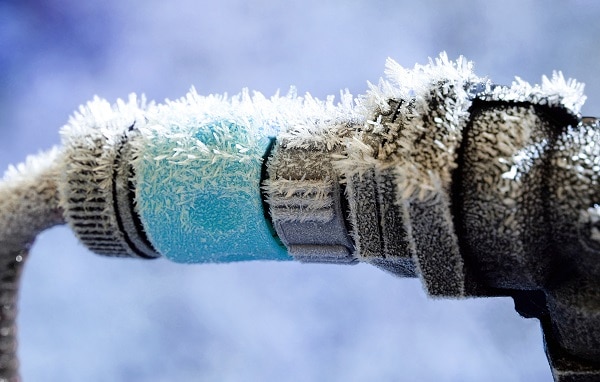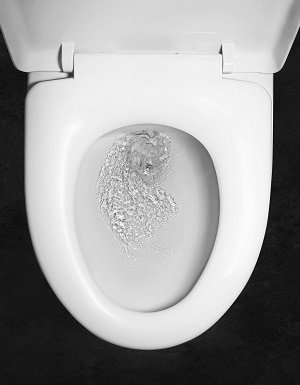
When the temperature drops, people can put on some extra layers and cozy up under some blankets to keep warm, but this isn’t possible for your plumbing and sprinkler system. As the winter approaches, it is important to ensure that your plumbing and sprinkler system are ready for the cold weather since they are usually full of water. When water freezes, it expands, and that expansion can wreak havoc on your pipes. Here’s what you need to do to get your plumbing and sprinkler systems ready for cooler temperatures.
Winterizing Your Indoor Plumbing for Winter
You may think that since your indoor plumbing is located indoors, away from direct contact with the elements and cushioned in insulation, it is relatively safe from being affected by colder weather. There are still some important steps you need to take, however, to decrease the risk of any damage from cold weather even for your indoor plumbing.
Step 1: Preparing Your Water Heater and Water Pump
To prepare your water heater and water pump, shut off the main water valve and turn off the water pump and the water heater. Doing this will protect the heating elements when there is no water inside of the tank
Step 2: Open All the Drain Valves and Taps
Open all your drain valves and taps by letting a steady trickle of water run through each of them. Make sure you know how many drain valves and taps you have in your home. Making a list beforehand and checking them off as you go will ensure that you get to each one. A closed tap will create a vacuum that will trap water inside of your pipes. If the trapped water freezes, it can cause the pipe to burst which is why all valves and taps should remain open throughout the winter.
Step 3: Remove Excess Water From the Pipes
Excess water can be removed from pipes using an air compressor. The strong rush of air will force the water out of the pipes.
Step 4: Protect Your Hot Water Tank
Open the drain valve in your hot water tank and allow it to completely drain. An important note to remember is that depending on the type of water heater you have, it may not have a floor drain. In this case, you will need to connect a garden hose to it and allow the water to escape into a bucket or into the floor drain in your garage if possible.
If your hot water heater has an additional water storage tank, make sure you drain it as well. This will be located in the rubber diaphragm of your hot water heater. As an additional measure, it might be good to add antifreeze to the jet pump case to ensure that any water that finds its way into the pump will not freeze and cause pressure to build.
Step 5: Remove Water from Toilet Tanks and Toilet Bowls

To do this, you will simply need to flush the toilets (with the water turned off) to remove any excess water from the tank and the bowl. As with the holding tank, adding in antifreeze will ensure that any water that cannot be removed from the tank or the bowl will not freeze and cause the toilet to crack.
Step 6: Check All Sink and Tub Drains That Could Have Drain Traps
Add antifreeze to these to prevent water from freezing and cracking the traps. Just as with the taps and drain valves, it may be helpful to have a list of these beforehand to ensure you don’t miss one.
Step 7: Insulate Exposed Pipes
This can be done with insulation sleeves that can be bought at your local hardware store. These sleeves can either be wrapped or slipped-on depending on the type you purchase. Make sure that all exposed pipes are covered. Any exposed section can be hit with cold air which will lead to the pipe expanding due to the cold, causing cracks.
Step 8: Additional Winterization Tips
Keep a faucet dripping when temperatures are forecasted to go below freezing. This will help keep water moving freely and continuously through your pipe, preventing them from freezing and causing damage to your plumbing.
Make sure your home’s crawl spaces are properly insulated. Block vents that lead to the outside of the home to protect any piping in your crawl spaces. This can be accomplished with simple cardboard or wood.
Winterizing Your Home’s Sprinkler System
Step 1: Shut Off the Water Supply Connected to Your Irrigation System
You don’t need to worry about winterizing the main shut-off valve to your irrigation system as it is usually located below the frost line. In addition to the main shut-off valve, you will need to turn off the water supply system as well. If your sprinkler system runs on an automatic time, you will also want to shut the timer off.
Turning the irrigation system off during the winter will ensure that your sprinklers are safe from water freezing and expanding in the lines. Remember to reprogram your timer during the coming spring after you turn the water supply back on.
Step 2: Drain the System
You will need to drain your rotor sprinklers to protect them from becoming damaged due to freezing water. To do this, first make sure the main water line is shut off. Next ,you will need to move each rotor by hand. Shake the water out and then screw the rotor head back on. In some cases, you may need to remove the check valve from the rotor to shake the water out.
Step 3: Insulate Any Outside Exposed Pipes
Wrapping foam insulation tape around your exposed outdoor pipes by hand should be enough to keep your pipes protected. You can also use foam insulation sleeves which can be found at your local hardware store.
Step 4: Insulate Your Backflow Preventers and Valves

You can use any leftover insulation material from the previous step for this one. Backflow preventers keep sewage and wastewater from flowing back up into your pipes. They look like half-rectangle pipes sticking up out of the ground. These pipes are especially vulnerable to freezing and bursting. Insulating the backflow preventers will keep them protected during the winter. During this step, you may also want to insulate the pipe’s valves to protect it as well.
Need Help Winterizing Your Home’s Plumbing?
Since water is such an important part of everyday life, there are many ways to access it in and around our homes. While these multiple points of access are generally convenient in everyday life, they can be overwhelming to keep track of during the process of winterizing. Our experienced and skilled experts at HEB Plumbing & Sprinkler can help you make this process less overwhelming. We’ll make sure all of your plumbing and sprinkler systems are ready for the winter so that you can focus on all the more fun things that come with the winter months, such as the holiday season, breaks from school, and staying cozy and warm inside. To make an appointment or schedule a consultation, contact us today!
